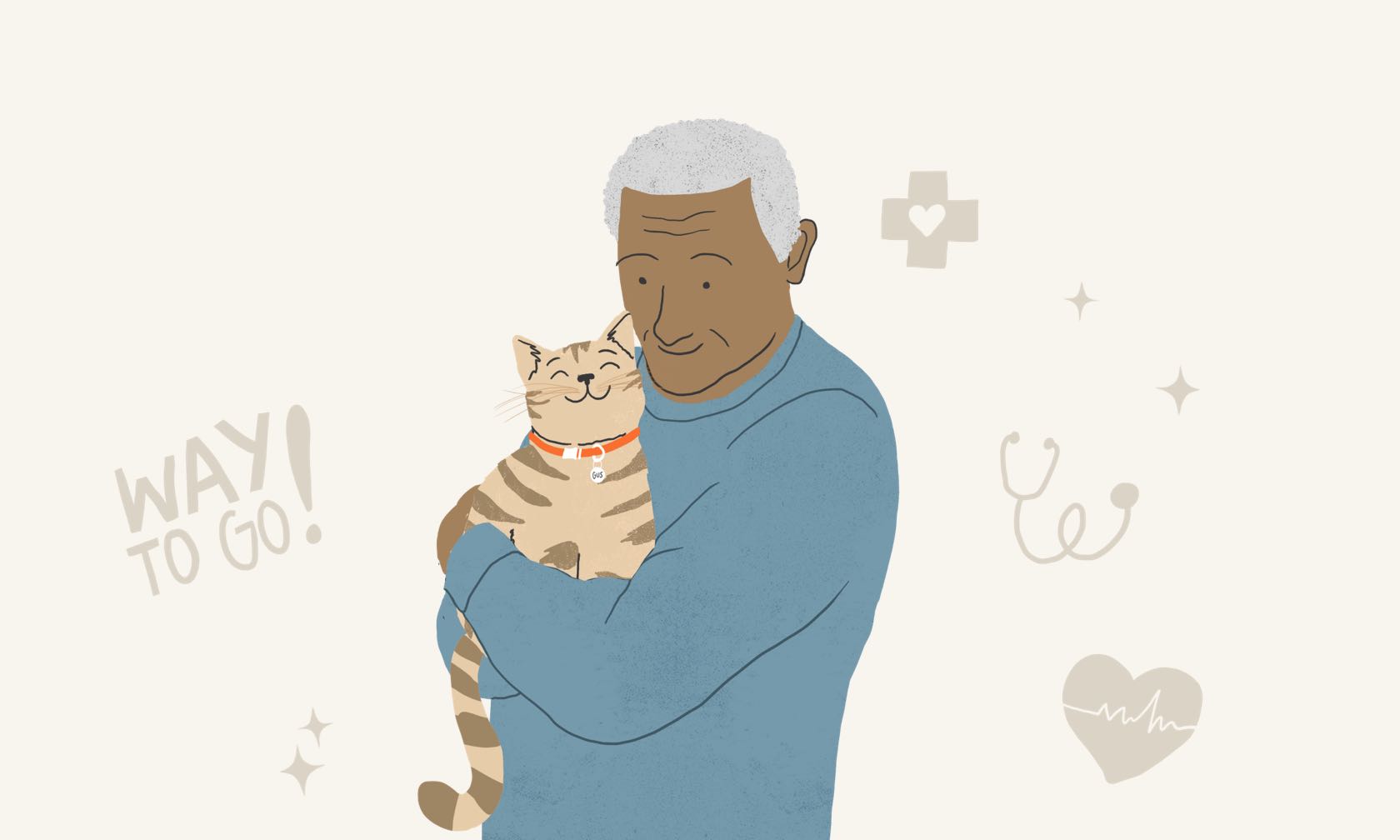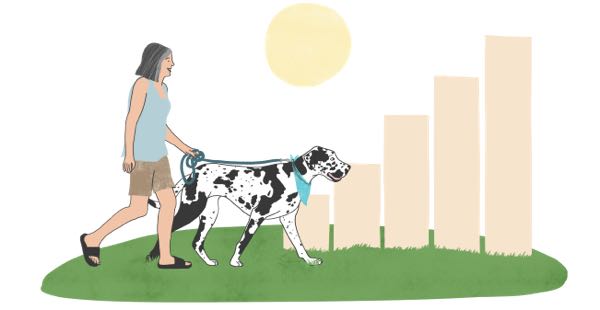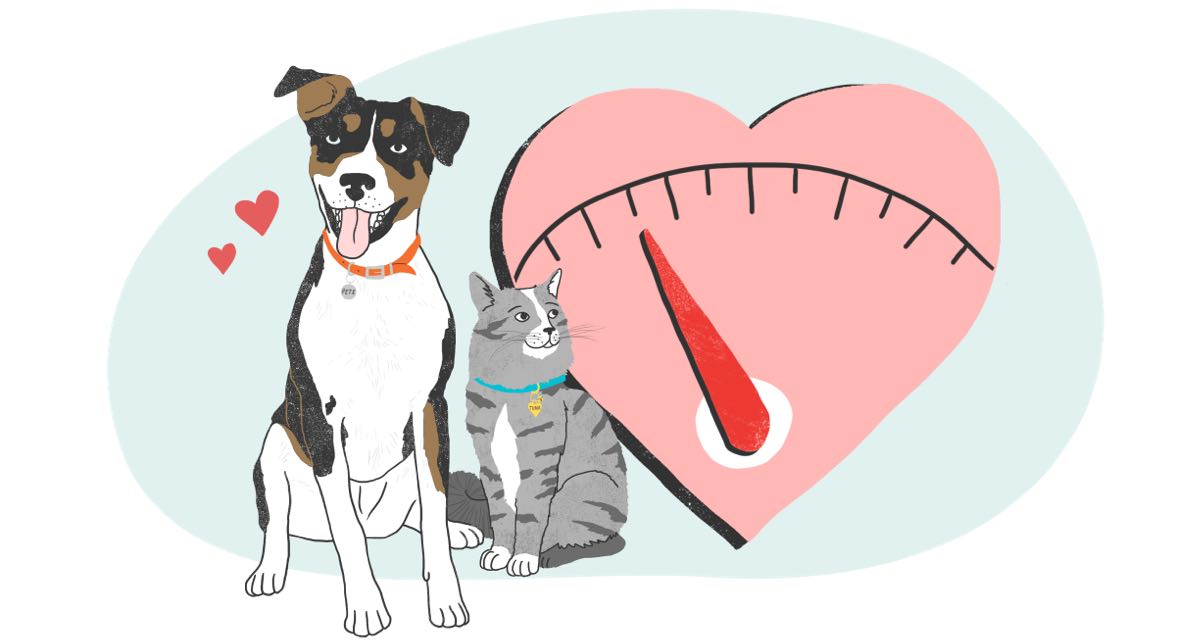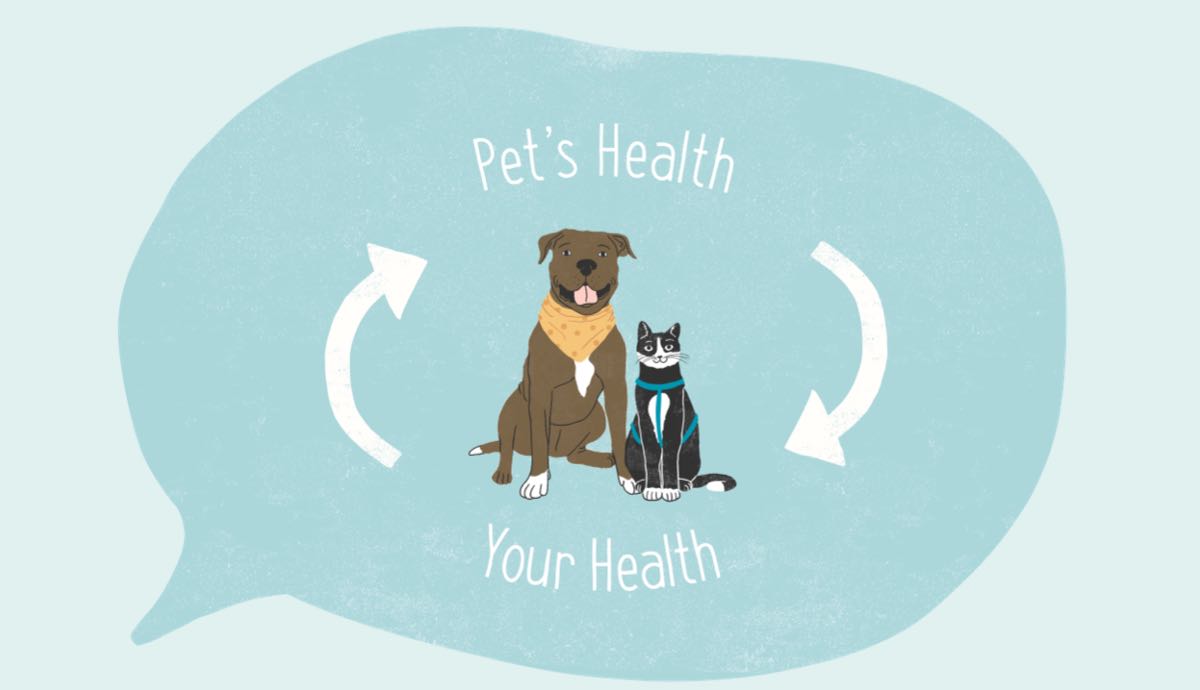
Healthy Aging With the Support of Pets
Taking care of ourselves is a collection of health related decisions and lifestyle choices. Adding a pet into our lives can helps us live longer, reduce our risk of illness, and improve our wellbeing.1

Staying Physically Active
On average, dog owners walk more minutes per week than non-owners and have a 54% higher likelihood of reaching their recommended levels of physical activity.2,3

Cardiovascular Health
Research indicates that owning a pet can lower cholesterol and triglyceride levels, help us maintain a lower resting heart rate, and significantly reduce our risk of heart attack.4,5,6

How You Can Help
It’s simple, spread the word! The more widely understood and accepted the benefits of the human animal bond are, the more we can help to inform decisions and policies that will positively effect pets, people, and communities.

References:
- HABRI website, (2025). Healthy Aging Research. https://habri.org/research/healthy-aging/
- Oka, K., & Shibata, A. (2009). Dog ownership and health-related physical activity among Japanese adults. Journal of Physical Activity and Health, 6(4), 412-418. https://habricentral.org/resources/34585
- Reeves, Matthew J., et al. “The impact of dog walking on leisure-time physical activity: results from a population-based survey of Michigan adults.” J Phys Act Health 8.3 (2011): 436-444. https://habricentral.org/resources/34617
- Anderson, W. P., Reid, C. M., & Jennings, G. L. (1992). Pet ownership and risk factors for cardiovascular disease. Medical journal of Australia, 157(5), 298-301. https://habricentral.org/resources/55397
- Kramer, Caroline K., Sadia Mehmood, and Renée S. Suen. "Dog ownership and survival: a systematic review and meta-analysis." Circulation: Cardiovascular Quality and Outcomes 12.10 (2019): e005554. https://www.ahajournals.org/doi/full/10.1161/CIRCOUTCOMES.119.005554
- Levine, Glenn N., et al. "Pet ownership and cardiovascular risk: a scientific statement from the American Heart Association." Circulation 127.23 (2013): 2353-2363. https://www.ahajournals.org/doi/abs/10.1161/CIR.0b013e31829201e1


